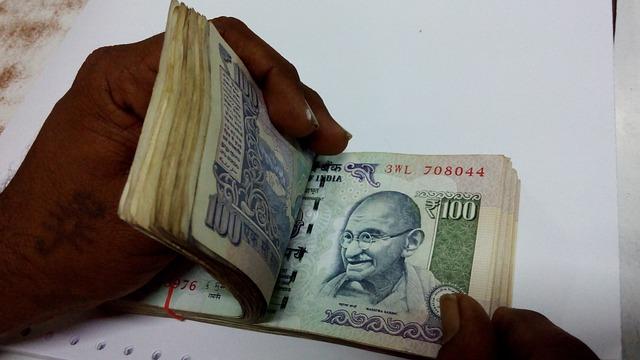
Economists are fond of saying ceteris paribus –“other things being unchanged”. As long as the RBI inflation target remains unchanged at five per cent - as the Governor confirmed today - as long as there are no major global shocks, as long as all other assumptions, that the Governor outlined like normal monsoon, good supply side management, remain in tact, lending rates will be a function of how soon the system moves from a liquidity deficit position to a liquidity neutral position.
So what should the borrower who is looking for lower lending rates look out for?
For this, one needs to look at the indicators of improved liquidity. Any increase in bank deposits higher than credit growth, any reduction in bank borrowing from RBI on a consistent basis, reduction in government’s cash balances with RBI, and increase in RBI’s holding of government securities and foreign exchange reserves, are all indicators of improving liquidity in the system.
There were some concerns about liquidity which were hinted at by the RBI Governor when he was talking of the FCNR (B) redemptions and the possibility of some counterparts not being able to honour their contracts to sell dollars to RBI.
The increase in RBI’s holding of government securities, in the current financial year has been matched by reduction in RBI’s lending to the banks, with a very small increase in the foreign exchange reserves. Overall therefore banks have experienced some improvement in liquidity but not such that they feel compelled to reduce their rates. There is in fact a small drop in the Reserve Money by 1.1 per cent –a variable that is not heard or seen much these days! What has probably happened, through RBI OMO, is that temporary liquidity through LAF has been substituted by durable liquidity through OMO.
No wonder, therefore, that the market has seen very little transmission of the rate cuts of earlier monetary policies into lending rates. The liquidity conditions have to markedly change for that to happen in any significant way. Mere rate cuts will not work.
There were some concerns about liquidity which were hinted at by the RBI Governor when he was talking of the FCNR (B) redemptions and the possibility of some counterparts not being able to honour their contracts to sell dollars to RBI.
To provide the background, in September 2013, in the wake of “taper tantrums” RBI opened a swap window from September 2013 to November 2013 when $ 34 billion of foreign exchange reserves were mopped up through a swap window at preferential rate through FCNR (B) and bank borrowings. It is quite likely that a significant portion of the swap amount represented bank borrowings. The RBI bulletin gives the figure of outstanding forward net sales contracts at $32.607 billion in December 2013. The figure starts coming down, as RBI must have presumably undertaken forward purchases once the market stabilized. The outstanding contracts came down to nearly zero in June 2014 at net sales of $154 million. Thereafter, net forward purchases started going up and reached a peak of $8.322 billion in March 2015. Since then, forward sales must have commenced as at the end of March 2016, outstanding forward contracts represented net sales of $4.253 billion (a turnaround of $ 12 billion since March 2015!).
What was a bit disconcerting to hear was the Governor warning that the market cannot take it for granted that dollar liquidity would be provided, while reassuring that rupee liquidity will not be an issue. Anything that affects the system and has implications for financial stability, has with it a “too critical or too important to fail” connotation and implies a moral hazard whether one likes it or not!
The RBI Governor made two points – one that a significant part of contracts would be redeemed and not rolled over as they represented leveraged funds. Second, that RBI has market reports that there could be some counterparties who may not be able to honour their commitments to sell/deliver dollars to RBI as the exporters or others from whom these counterparties had bought dollars may not be able to make their committed deliveries on the due dates. This may prompt some rollover.
RBI has shown on earlier occasions like at the time of redemption of Resurgent India Bonds that it can handle such large maturing obligations very efficiently. There is no reason to believe that it cannot be done this time or that there will be any disruption to market liquidity. Given the fact that the counterparts to whom RBI has sold dollars forward may not be the same as those from whom RBI has bought dollars forward, there could no doubt be a shortage of dollar liquidity on a gross basis and hence the swap redemption needs careful handling. But what was a bit disconcerting to hear was the Governor warning that the market cannot take it for granted that dollar liquidity would be provided, while reassuring that rupee liquidity will not be an issue. Anything that affects the system and has implications for financial stability, has with it a “too critical or too important to fail” connotation and implies a moral hazard whether one likes it or not! When the time comes, the RBI will have to ensure that sufficient dollar as well as rupee liquidity is provided, to ensure smooth settlement of the maturity of the $ 34 billion worth of dollar swaps.
How will all this affect the sentiment for liquidity in the market, on which the transmission and rate reductions are so dependent? This is the big question looming large. Because of the swap redemption uncertainty, perhaps the transmission will not really start working till the end of the year. This is the take away from today’s policy.
(The writer is a former Deputy Governor of the Reserve Bank of India)



